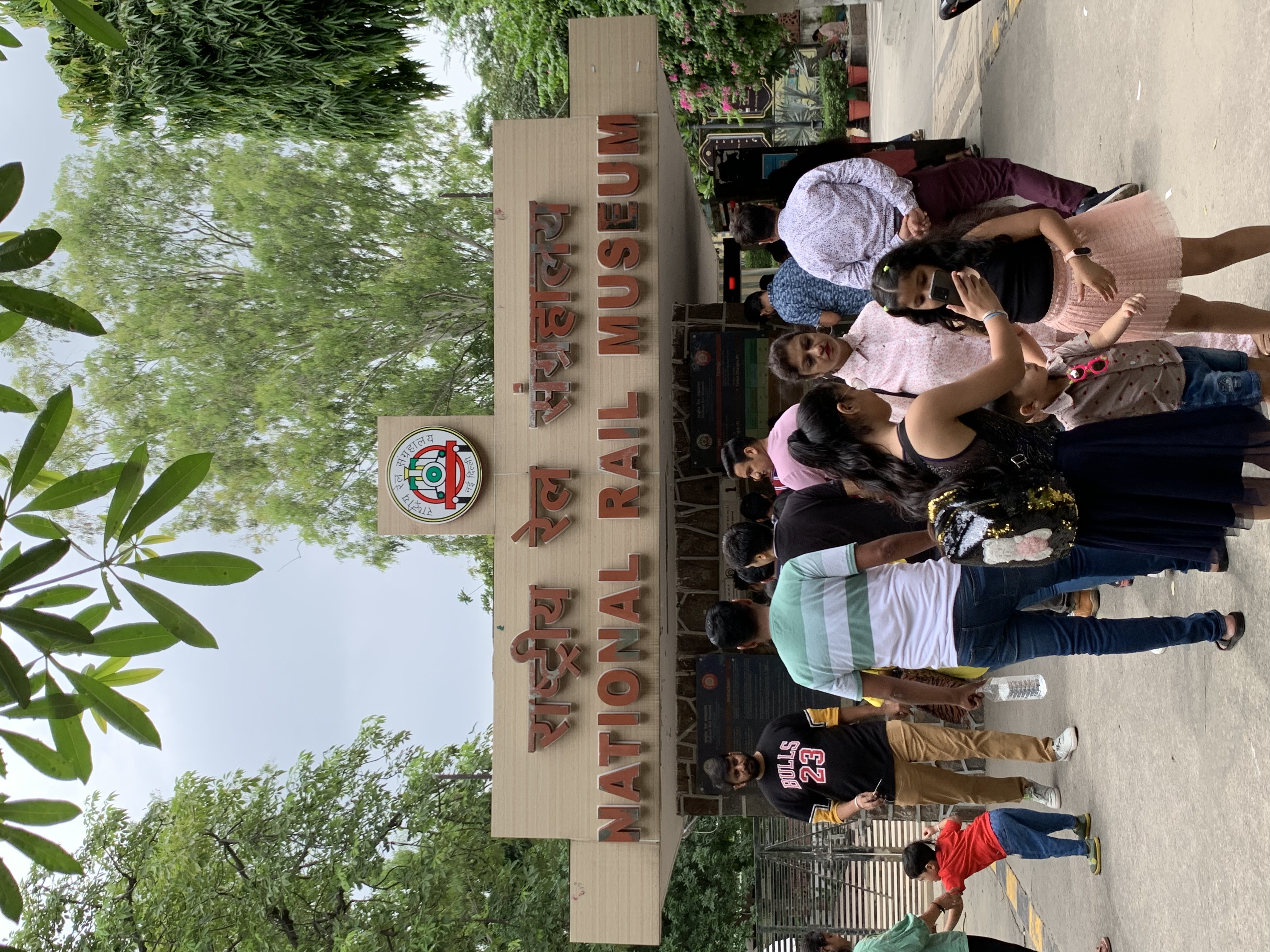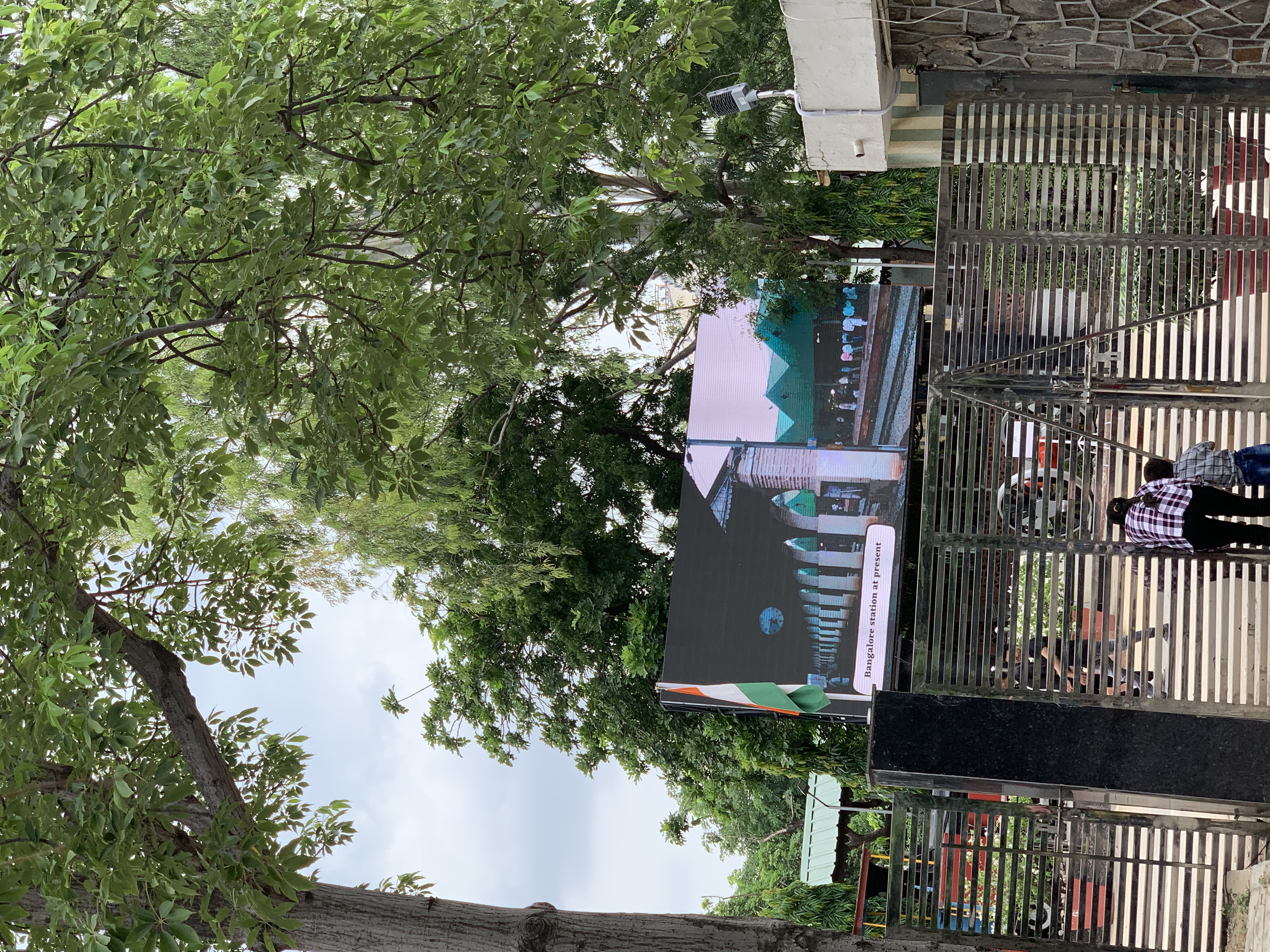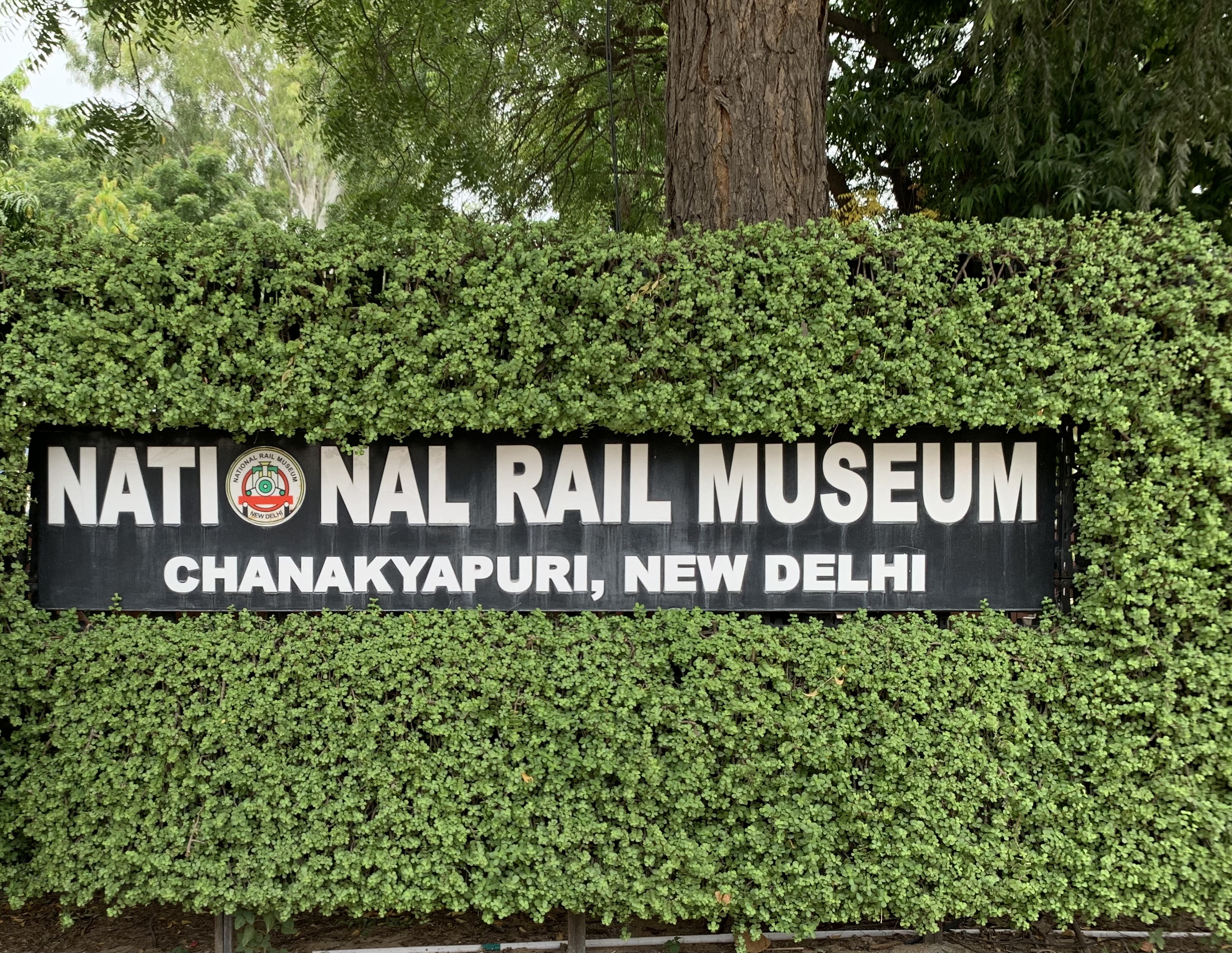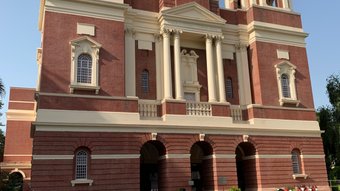Exploring the National Rail Museum: A Journey Through Time.
1
About :
Yesterday, I had the pleasure of visiting the National Rail Museum in Chanakyapuri with my family. From the vibrant vendor stalls outside to the impressive collection of locomotives and artifacts inside, the museum provided a captivating glimpse into the world of trains.




Upon entering the gate, we were greeted by a guide map that helped us navigate through the vast exhibition. The first sight that caught our attention was the magnificent red and black steam locomotive, MTR-2 with an oversize chimney. Built in 1910, its imposing presence symbolized the power and grandeur of the railways. As we walked further, we discovered the John Morris Fire Engine of 1914, which gave us a fascinating insight into the firefighting techniques of that era. The detailed display provided information about the manufacturers, awards, engine tires, speed, and various fire equipment used during that time.






Few metres away, we saw a souvenir shop, where I purchased a Magic Mug, priced at 300 INR. It served as a delightful reminder of our memorable trip to the museum. Moving on, we encountered the EIR-22 Fairy Queen, a steam locomotive from 1855, and the Ramgotty Steam Loco from 1862. These relics transported us back in time, allowing us to appreciate the technological advancements that have shaped the Indian Railway system.




Entering the museum, the first exhibit that caught my attention was the Miraj Station Clock Maker Benson London 1926. This antique clock, with its intricate design and precise timekeeping, symbolized the importance of punctuality in the railway system. Then I encountered the Rocket Steam Loco of 1829, which represented a significant milestone in the development of steam-powered engines.



Moving further into the museum, the Mahatma Gandhi Asthi Car and the Iron Chest stood out. The former was a poignant reminder of Gandhi’s immense contribution to India’s freedom struggle. This specially designed railway carriage carried his ashes across the country, allowing millions of people to pay their respects. On the other hand, the iron chest built in 1885, emphasized the trust placed in the railways to safeguard precious cargo.


As I ventured further, I was in awe of the Chenab Bridge, the world’s highest railway bridge. The model showcased the engineering marvel that connects Jammu and Kashmir, defying geographical barriers. The museum also provided a comprehensive display of various signaling systems used in the Indian railways. From the ciruit breaker to the hand signals and the shunt signals, each model elucidated the intricate mechanisms employed to ensure safety and smooth operation of trains.



Then i came across the Ferry Ship SS Hardinge, a remarkable vessel served as a crucial link between railways and waterways, facilitating transportation across rivers and lakes. Also, the steam locomotives on display, such as the steam loco YP 2522, and steam loco MSM 777 W Class, capture the essence of a bygone era. These magnificent machines were the backbone of India’s railway system, propelling the nation’s industrial and economic growth.



The Composite Coach BNWR- 247 1st Class represents the opulence and grandeur associated with train travel during the colonial era. This exquisite coach showcases the luxurious amenities and elegant interiors that were reserved for the elite. As we continued our exploration, the rail museums of India and the Indian builder and number plates showcased at the museum demonstrate the diversity and uniqueness of the country’s railway network. Each state had its own railway system, characterised by distinct builder and number plates.



One of the intriguing artifacts we encountered were the metal passes used by VIPs during the division of the railway into different state railways. These passes hold historical significance as they reflect the administrative changes that occurred within the railway system.


As we arrived at the museum junction, we were greeted by the sight of a joy train, brimming with excited passengers. Upon boarding the joy train, we settled in the first coach, eagerly anticipating the journey ahead. The train incharge soon arrived to check our ticket, ensuring a smooth and organized trip. As the train embarked on its journey, we found ourselves captivated by the picturesque surroundings. The lush greenery and the vibrant landscapes served as a serene backdrop, allowing us to appreciate the beauty of nature.




Our day at the National Rail Museum was truly awesome, combining education with excitement. It provided an ideal platform for families to bond while learning about the country’s railway heritage. I believe that one should definitely visit this museum to gain a deeper understanding of railways and enjoy a day filled with thrilled adventure.


Device used for photography- Iphone XS Max.
This blog is completely original and free of plagiarism. Thankyou!
Tags :
Their limit for today is $0!





















Comments:
Reply:
To comment on this video please connect a HIVE account to your profile: Connect HIVE Account